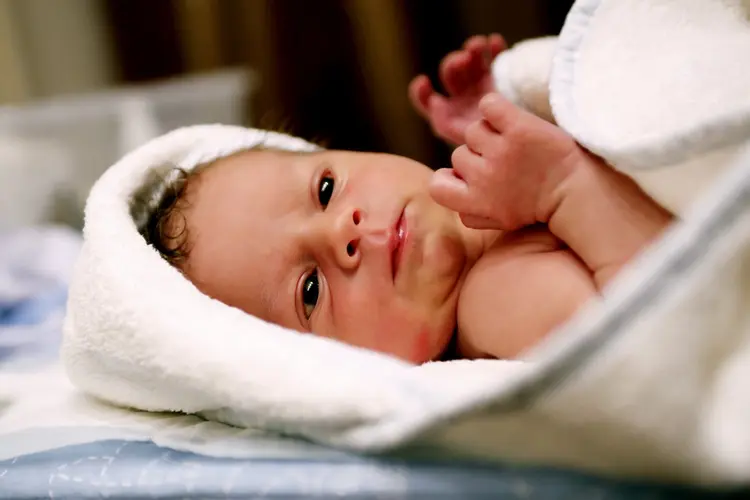Get the camera ready -- like all the "firsts" to come, baby's first bath is a special event. In fact, every bath time can be a special time for bonding with your newborn. Cooing, singing, talking -- your baby loves the sound of your voice and thrives on your soft touch.
Baby Bath: Getting Ready
The first bath will be a sponge bath. Pick a warm room with a flat surface, like a bathroom or kitchen counter, a changing table, or a bed. Cover the surface with a thick towel. Make sure the room temperature is at least 75 degrees Fahrenheit, because babies chill easily.
Assemble all the baby bath products you will need:
- Baby bath sponge or clean wash cloth (double-rinsed)
- Clean blanket or bath towel (a hooded one is nice)
- Clean diaper
- Clean clothes
- Vaseline and gauze (if you have a circumcised boy)
- Warm water (not hot)
Important: Never leave your baby alone in a bath -- not even for a moment. If you must get to the phone, the stove, or whatever, take baby with you.
Baby Bath: Time for a Sponge Bath
Gentle sponge baths are perfect for the first few weeks until the umbilical cord falls off, the circumcision heals, and the navel heals completely.
The basics of bathing a baby:
- First, undress baby -- cradling the head with one hand. Leave the diaper on (wash that area last). Wrap baby in a towel, exposing only those areas that you are washing.
- Using a baby bath sponge or wash cloth, cleanse one area at a time. Start behind the ears, then move to the neck, elbows, knees, between fingers and toes. Pay attention to creases under the arms, behind the ears, around the neck.
- The hair comes toward the end of bath time so baby doesn't get cold. While newborns don't have much hair, you can sponge the few wisps that are there. To avoid getting eyes wet, tip the head back just a little. There's no need for shampoo; just use water.
- Now it's time to remove the diaper and sponge baby's belly, bottom, and genitals.
- Wash little girls from front to back. If there's a little vaginal discharge, don't worry -- and don't try to wipe it all away. If a little boy is uncircumcised, leave the foreskin alone. If circumcised, don't wash the head of the penis until it's healed.
- Gently pat baby dry. Rubbing the skin will irritate it.
Bath time is over, and your fresh little baby is ready for a clean diaper and clothes!
Baby Bath: Tub Time
Once the umbilical cord falls off, and the circumcision and the navel are completely healed, it's time to try a tub bath. Not all babies like the transition, so if your baby gets fussy, go back to sponge baths for a week or so, then try again. Bathing a baby is a process -- an adjustment for both baby and parent.
To prepare:
- Find a baby bathtub made of thick plastic that is the right size for your baby. An insert for young babies is ideal -- and keeps the baby's head out of the water. A slip-resistant backing on the tub will keep it from moving during bath time.
Don't try to use bath seats or bath rings. These are for older babies who can sit up on their own -- not for newborns.
Bathing a Baby: The First Tub Bath
Make the first tub baths quick ones. Fill the tub with only 2 or 3 inches of warm -- not hot -- water. Use one hand to support baby’s head, then slowly lower them.
- Using a washcloth or baby bath sponge, wash the face and hair. When rinsing, protect eyes with your hand across the forehead. Gently wash the rest of baby with water and a small amount of soap.
- Use water or a cleanser designed for babies. As hair grows, try gentle baby shampoo.
- To keep baby warm during the bath, cup your hand to let handfuls of water wash over baby's chest.
- Gently pat baby dry. Apply baby lotion all over to seal in moisture.
- Now it's time for a fresh diaper. Apply diaper ointment to protect against irritation.
When bath time is over, wrap baby in a towel right away, covering baby's head for warmth. Congratulations on a successful bath!
